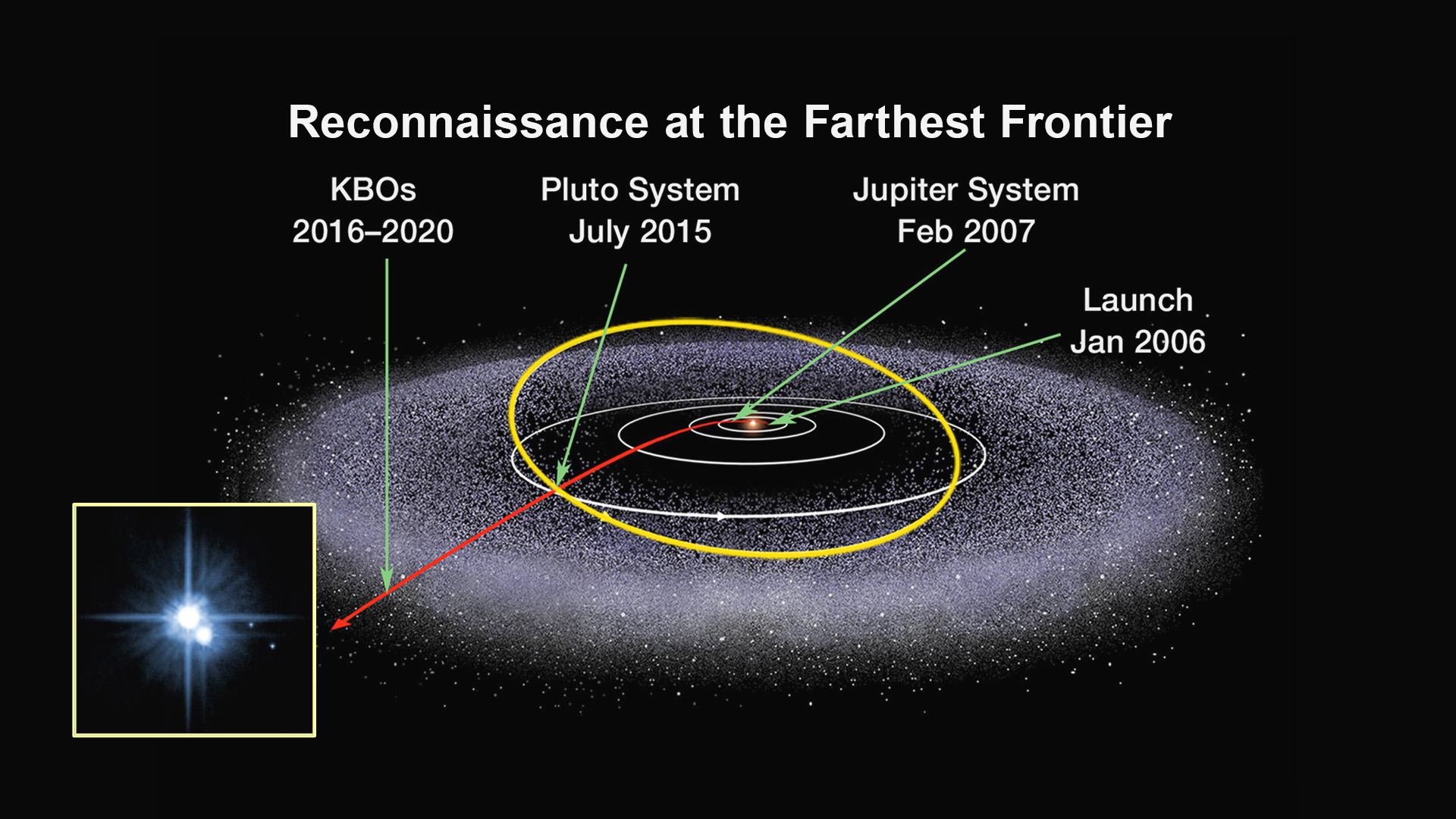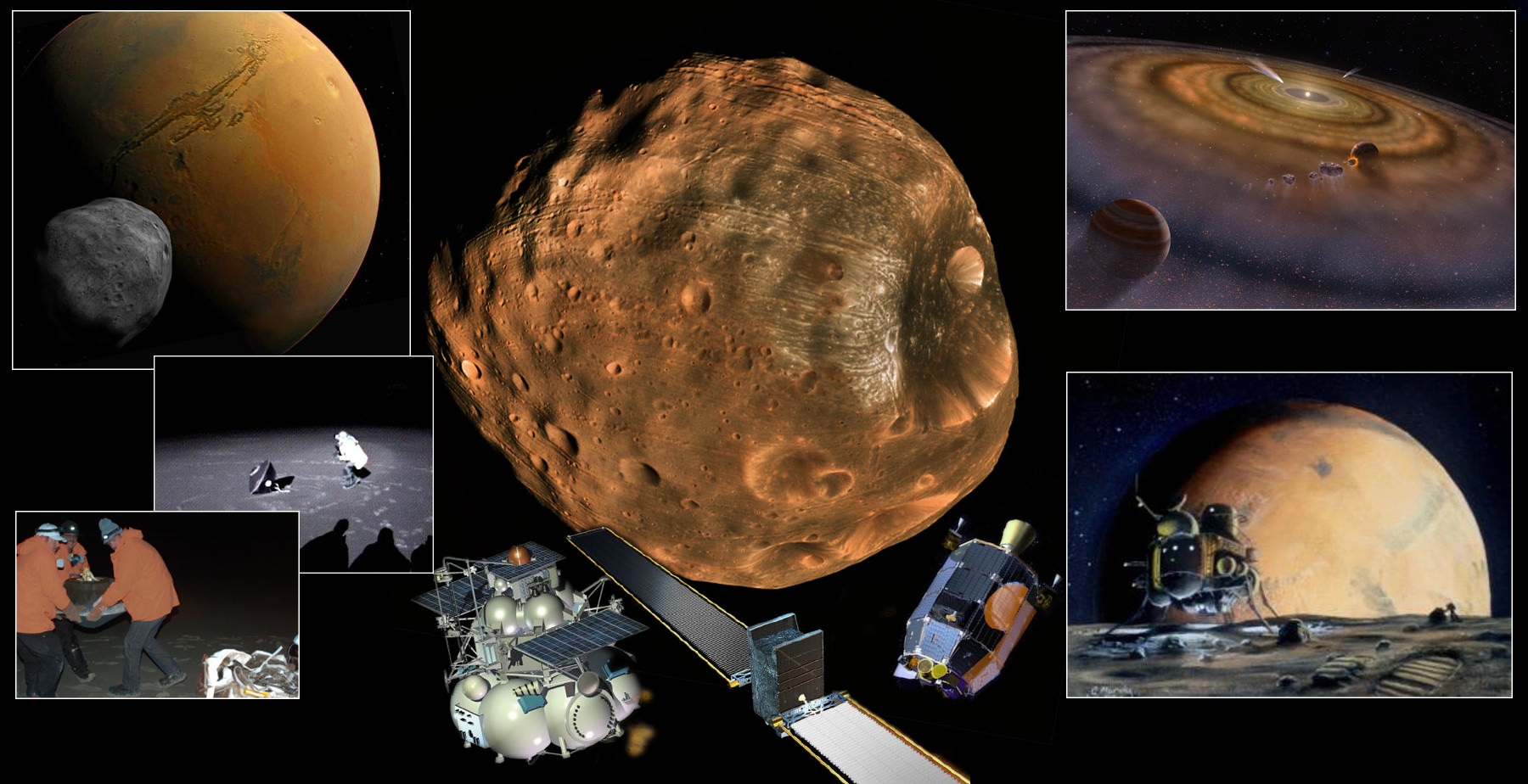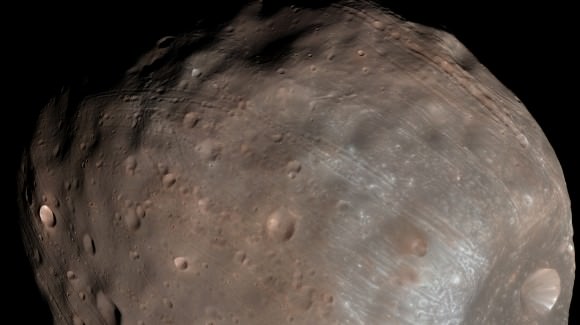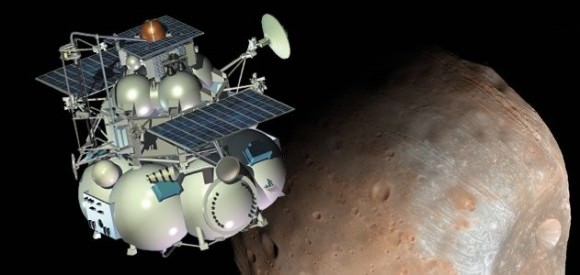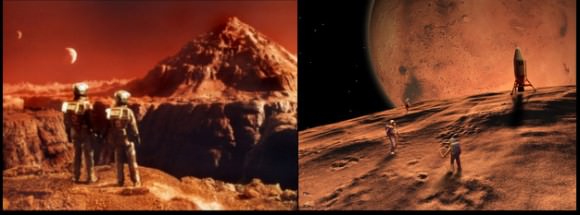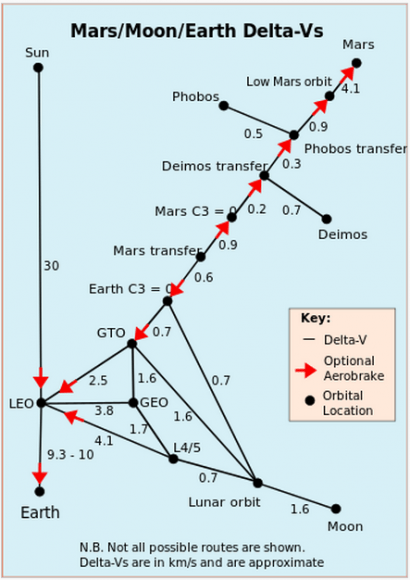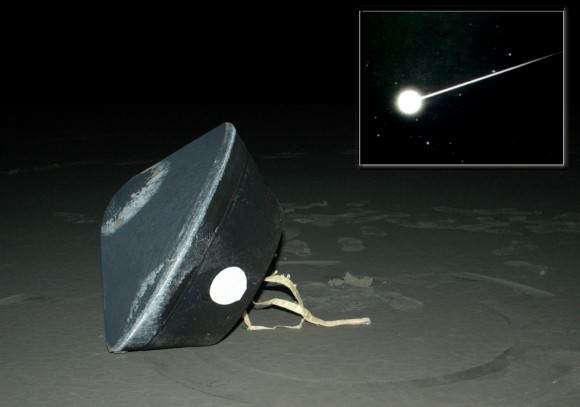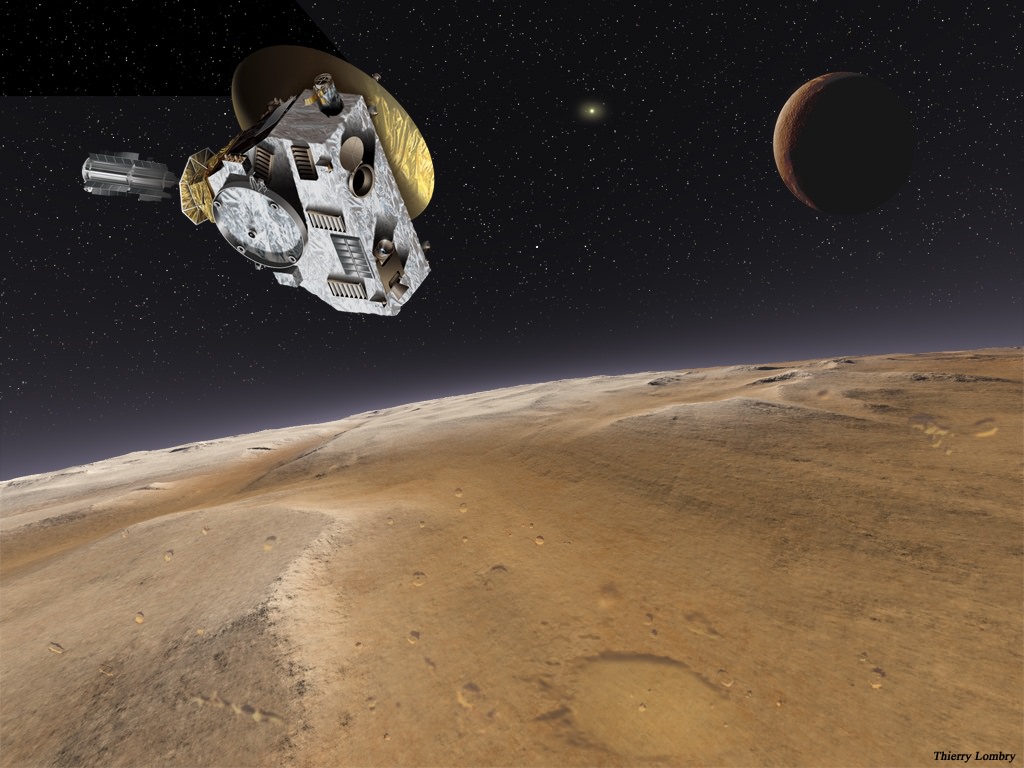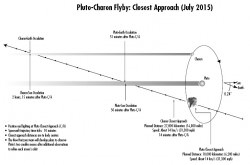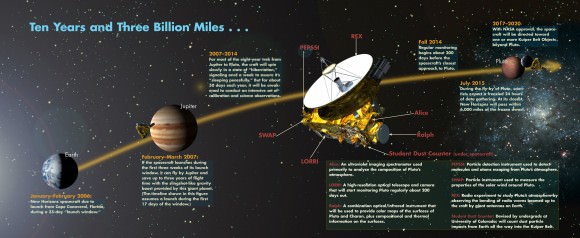The latest set of images from the long range imager, LORRI, on New Horizons now reveals surface features. At a press conference today, exhilarated NASA scientists discussed what the images are now suggesting. (Photo Credit: NASA/New Horizons)
Today, a trio of NASA scientists expressed their exhilaration with the set of new Pluto images released by the New Horizons team. “Land Ho” exclaimed Dr. Alan Stern as he first tried to explain where they are on their long journey. Nearly 500 years ago, not even Magellan on a three year journey to circumnavigate the Earth waited so long. A ten year journey is beginning to reveal fascinating new details of the dwarf planet Pluto, once the ninth planet of our Solar System. The latest images show surface features on Pluto suggesting polar caps.
A team effort that Dr. Weaver said called upon leading experts to resolve these newest details of Pluto’s surface. The inset at left shows schematically the geographic relationship of the two bodies as they orbit each other. The inset at right shows surface details at 3x maximum resolution. (Photo Credit: NASA/New Horizons)
The NASA press conference took place this afternoon, anchored by Dr. John Grunsfeld, Associate Administrator for the Science Mission Directorate who quickly turned over the discussion to the project scientist of the New Horizons mission, Dr. Alan Stern from the Southwest Research Institute of San Antonio, Texas. Grunsfeld began by stating NASA’s mission – “to explore, discover and inspire” and added that New Horizons is certainly executing these prime objectives.
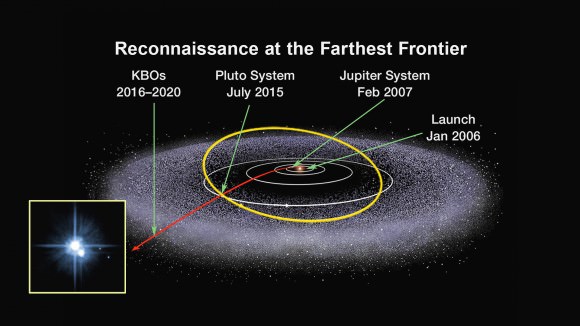
Alan Stern started off by expressing his excitement with the latest results from the long range telescope on board New Horizons, LORRI, but emphasized he represents a team effort, the culmination of decades of work.
With just 11 weeks remaining and now 98% of the way to Pluto, the latest set of images from LORRI have now revealed details better than the best that was previously attainable – from the Hubble Space Telescope. Most incredible are indications of polar caps on the dwarf planet Pluto.
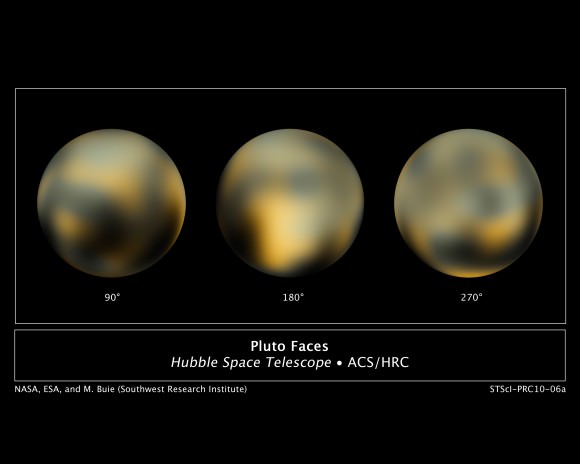
Dr. Stern, stated that the 25th Anniversay of the Hubble mission has also functioned as a segue to what is about to unfold from New Horizons. Until now, the best images of Pluto’s surface had been wrestled out of images from Hubble with computer processing. Yet, at the present distance New Horizons remains, his team is still relying on image processing to reveal these first surface details.
 The gravitational tug of war of the unique binary system has forced both small bodies to forever face each other, similar to how our Moon always faces the Earth. (Photo Credit: NASA/New Horizons)
The gravitational tug of war of the unique binary system has forced both small bodies to forever face each other, similar to how our Moon always faces the Earth. (Photo Credit: NASA/New Horizons)
Dr. Stern stated how remarkable the Pluto-Charon system is. The earlier set of LORRI images from 2014 had shown the gravitational dance of the two small bodies. He stated that they are truly a binary system and a type we have never explored before. Pluto-Charon is a dual synchronous, tidally locked system. Dr. Stern explained that the Earth, close-in to the Sun, and their space probe New Horizons, now on its final approach, is viewing the sunlit side of Pluto and Charon.
The system is tipped over relative to its orbital plane around the Sun. Dr. Stern stated, “it is like watching Pluto rotate on a spit.” He said that we are nearly seeing it face on; similar to an observer hovering far above the Earth’s polar cap and looking down upon the Earth-Moon system. The orbits of the two bodies, as seen in the LORRI image sequence (animations, above), appear elliptical (oval), however, due to the extreme and final state of this binary system, the orbits are perfect circles; the eccentricities are zero! New Horizons is just approaching slightly off center.
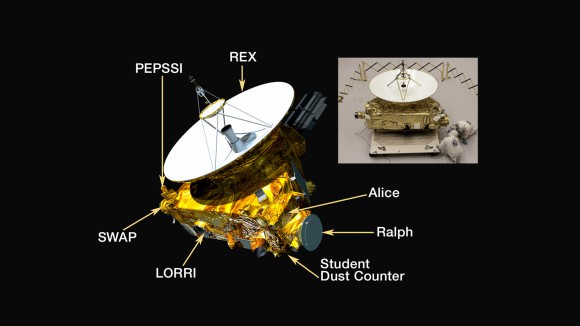
Dr. Stern continued and explained how this latest set is now showing surface features on Pluto. The features “are suggesting the presence of polar caps”, however he also emphasized that it remains only suggestive until New Horizons can deliver more details, that is, higher resolution, color imagery from the Ralph imager and spectroscopic data (Ralph and Alice imaging spectrometers) to reveal composition. Dr. Stern turned over the press conference to Dr. Hal Weaver of John Hopkins’ Applied Physics Laboratory, the lead scientist for the LORRI instrument.
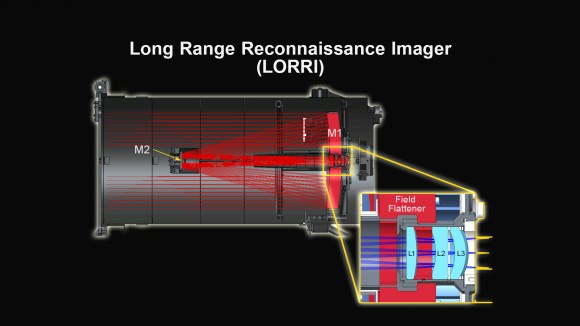
LORRI as Dr. Weaver explained is a state-of-the-art instrument. A fixed focus telescopic camera, functional from room temp down to 180 degees Fahrenheit below zero and utilizes an 8 inch primary mirror. The optical quality is extraordinary but the light gathering power is the same as one has in an amateur 8 inch telescope such as offered by Meade or Celestron. Still further, Dr. Weaver stated that LORRI is also extremely efficient and ligthweight, using less than 5 watts of power and weighing less than 20 lbs.
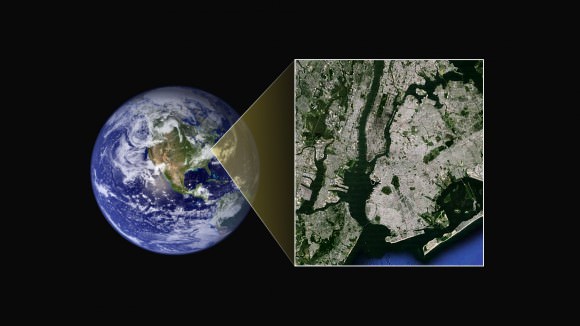
Dr. Weaver explained how the raw images from LORRI are presently little more than blotches of light, unspectacular at first glance, but with image processing, the details discussed today are revealed. The New Horizons team employed world-class experts in the technique of Image Deconvolution. It was again Hubble that spawned “a cottage industry”, over 20 years ago, including one expert – Todd Lauer of the National Optical Astronomy Observatory. Lauer and others took on the challenge of extracting quality imagery from the Hubble space telescope as it struggled with the astigmatism accidentally built into its optical system. A NASA Space Shuttle mission delivered and inserted a corrective lens into Hubble which has made its 25 years of service possible.
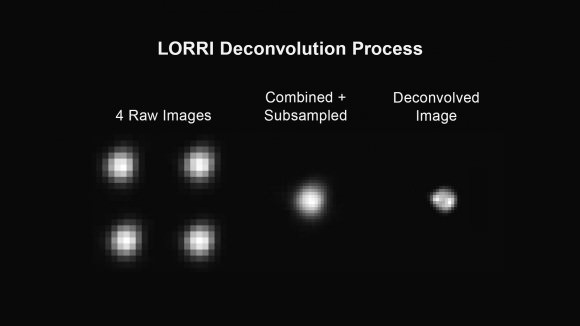
And the New Horizons’ processed images are now slightly better than Hubble and will just get much better. From the Q&A with the press. Weaver explained that while the images show more detail, Earth-based and Hubble images remain more light sensitive. Hubble sets an upper limit to the size of any remaining moons to be discovered. Weaver stated that by June, New Horizons’ LORRI will exceed the light sensitivity limits of Hubble. If there are more moons to be found, June will be the month.
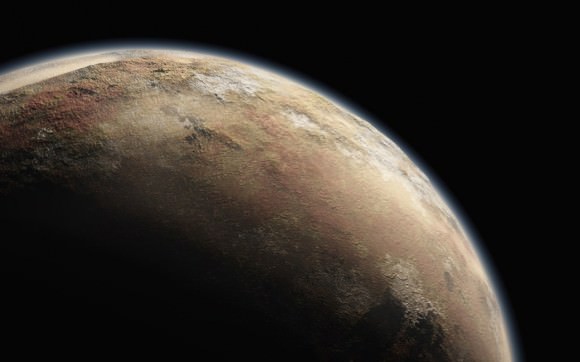
Through the Q&A, Dr. Stern stated that an extraordinary aspect of Pluto’s atmosphere is that the planet’s atmosphere has continued to expand despite having passed a point in its orbit at which it should be freezing and condensing onto its surface. The atmosphere expanded 200 to 300% in the last decade. With the limited observations, Stern and other Pluto experts surmise that there is a lag in the climate akin to how our hottest months lag the beginning of Summer by a couple of months. Perhaps, a latent heat stored up in the near surface has continued to vaporize frozen gases thus building up the atmosphere more than first expected.
The composition of the dwarf planet’s surface was discussed. Most evident in Earth-based spectroscopy is that there is molecular nitrogen, carbon monoxide and methane. Stern stated they these species of molecules could explain the bright and dark spots of the surface. However, he emphasized that Pluto is composed of 70% rock by mass and the remaining is ice. Charon stands in remarkable contrast to Pluto. Chraon has primarily water and ammonia hydrates on its surface; no detectable atmosphere (so far). Charon’s appearance is much more uniform and bland. Altogether, Stern said that experts call this the Pluto-Charon dichotomy.
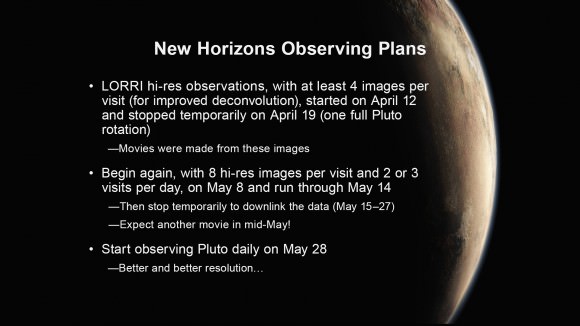
Dr. Stern near the end of the press conference restated that this is truly “my meet Pluto moment.” New Horizons is like a plane on its final approach to touchdown but New Horizons cannot slow down. There are no retro-rockets, no propulsion onboard that can slow down the probe on its trek to escape the gravity of the Sun. The probe will join the Pioneer and Voyager space probes as the only Human-made objects to leave the Solar System. With its final approach, with every day, Pluto and Charon closes in as Dr. Stern and Dr. Weaver explained, Pluto’s image will fill the full breadth of the imaging detector. Details on its surface will be equivalent to high resolution images of New York’s Manhattan (figure, above) showing details such as the ponds in Central Park.
To continue following the latest release of images from New Horizons go to http://www.nasa.gov/newhorizons/lorri-gallery.

